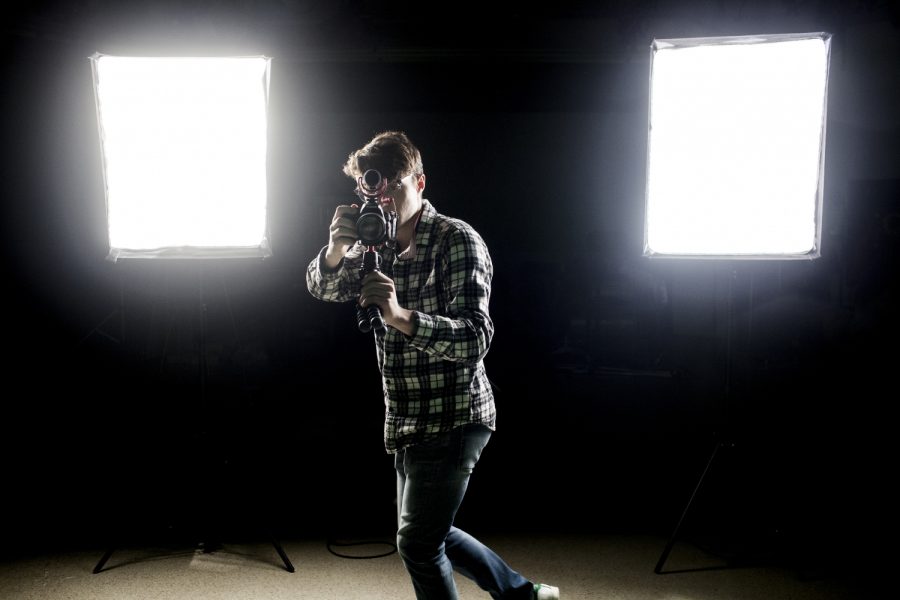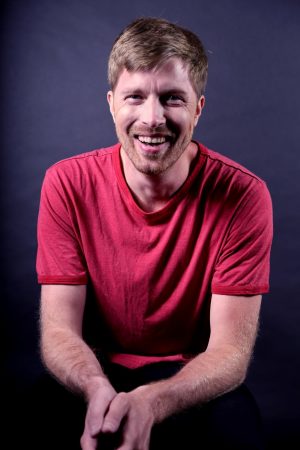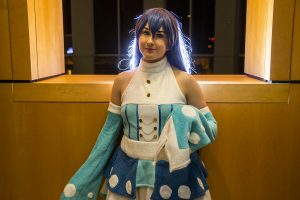From music videos to horror-critique
UI freshman Rob Strang creates films under his Youtube channel, Strange Films.
UI cinema major Rob Strang poses for a portrait at the Lindquist Center in Iowa City on Sunday, January 27, 2019. Strang taught himself how to film and edit videos last year and hopes to produce sitcoms in the future.
January 30, 2019
The video opens with ominous music as a hand pushes open a wooden door. The words “Are you ready?” flash the screen in a most disturbing font. A guy bolts through a darkened forest. A shady figure sits in a rocking chair in a dark room, staring through a mirror. Finally, the title, “No, this is horror” appears in bold text.
This was the trailer to University of Iowa freshman Robert Strang’s 20-minute short film. It took him two months and two short trailers before publishing the video on his YouTube channel, Strange Films.
Strang said he initially realized he wanted to be a filmmaker the December of his senior year in high school.
“I was kind of having a crisis in my life, and I was like, ‘What am I going to do for the rest of my life?’” he said. “Throughout my whole life, I always enjoyed film, and I’ve always wanted to create movies, and I didn’t really do that before then.”
Strang then decided to apply to the “hardest film school in the country,” the University of Southern California. Unfortunately, he did not get in.
“The first film I made was not too good,” he said. “It’s pretty tough competition up there.”
Related: Using film as a form of protest
He is now double majoring in creative writing and cinematic arts at the UI.
Strang has made four films that have a narrative and one music video featuring UI freshman Aaron Choi.
“[Choi] just reached out to me on Instagram and wanted me to shoot a video of him dancing,” Strang said. “I want to do music videos because I really like the editing aspect of that. I think music videos are a really good way to experiment with stuff. It allows some different techniques to be put to use that normally wouldn’t be in a narrative film.”
Strang co-directed the film “No, This is Horror’” with high-school friend Orson Codd. It was completed in July 2018.
“[‘No, This is Horror’] was the biggest thing we’ve ever done,” Strang said. “I’m really proud of it; it was just a really fun time. You can go watch that on my YouTube channel. That took about two months to make.”
Strang says it is his proudest work.
“It’s rough. It’s amateur. But I really learned a lot from that film,” he said. “I learned a lot about lighting, I learned a lot about plot development, I learned a lot about directing, just what to tell the actors. I learned a lot about continuity and editing. I learned what the field has to offer.”
“No, This is Horror” has many spooky and thrilling moments, but overall, it acts as a satire of horror films.
“We wanted to be making fun of horror films, because I think they’re ridiculous,” Strang said. “I mainly focus on horror because horror is really cheap and easy to do. I don’t know why it happens. It’s a really great way to experiment with stuff. A lot of directors start on horror films.”
Strang always writes and directs his own films, even starring in them occasionally, as he did with “No, This is Horror.”
“I’m actually venturing into acting,” he said. “I’m trying to get some auditions in Des Moines and Chicago. I’ve never acted before I started making movies.”
However, he can attest that behind the camera work is much more stressful than in front.
“It’s a lot more. You have to worry about it looking good,” he said. “Being behind the camera is a lot harder than just being in front of it. It’s not just remembering lines. You have to remember everything, like what scenes this shot is for, what the actors are doing, are the camera functions right, are the actors doing everything you want them to? It’s just a lot different.”
There are camera angles to consider, lighting to adjust, and a scene to set. But the hardest problems are the unexpected ones.
“There are always obstacles. Everything that you think will go wrong probably will go wrong,” Strang said. “For example, the cast of ‘No, This is Horror’ was actually not the original cast. Most of the original cast of the movie just didn’t want to do it, so we had to scrounge around and find people to do it.”
Strang draws inspiration from his favorite films in his work, including Stanley Kubrick’s A Clockwork Orange.
“I think borrowing from other films is a really important trade when you’re making a movie,” he said. “A big inspiration of mine is Stanley Kubrick. I just like his style. Everything feels so grand in his movies. I like when a movie gives me goose bumps, that’s a good movie. Most of Stanley Kubrick’s movies give me goose bumps. It’s awesome. Only a couple other movies do that.”






